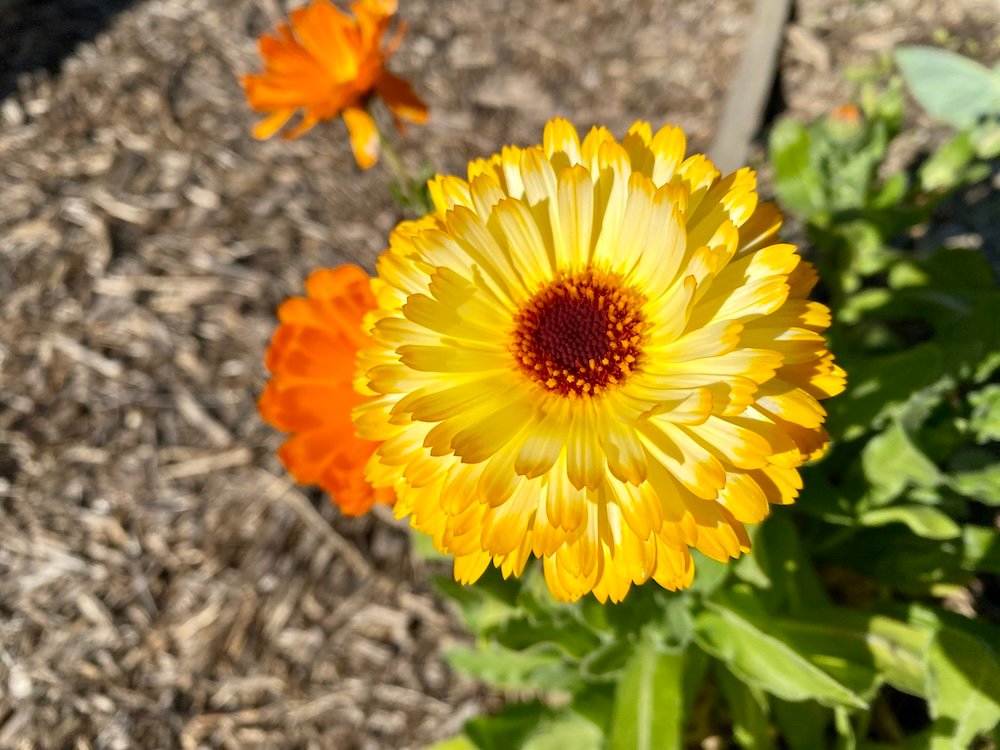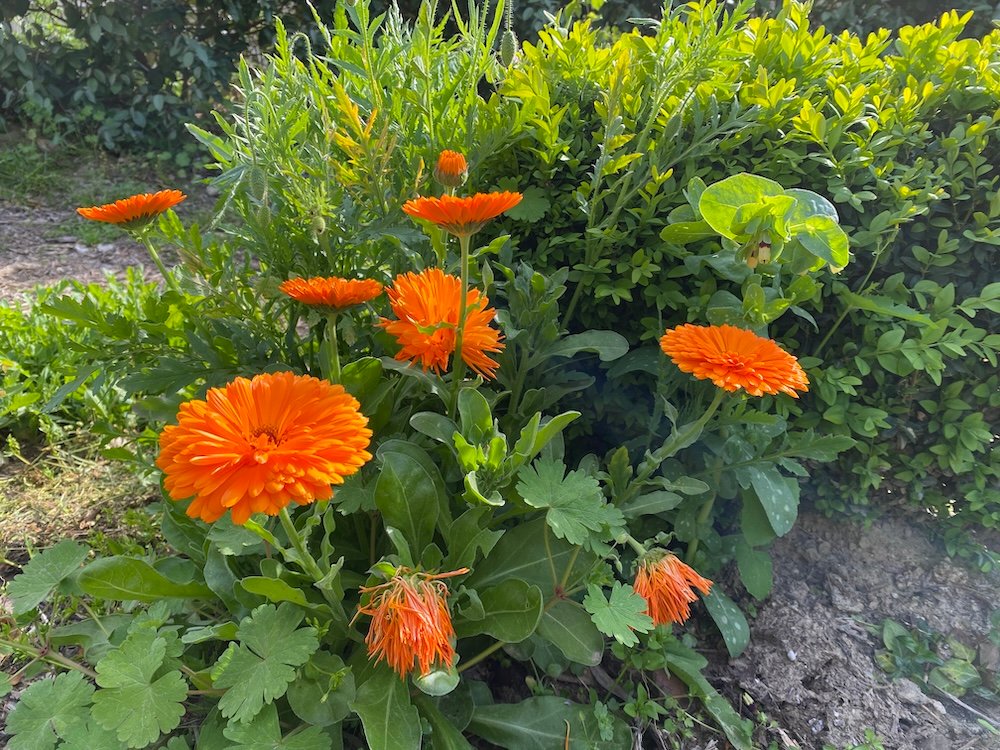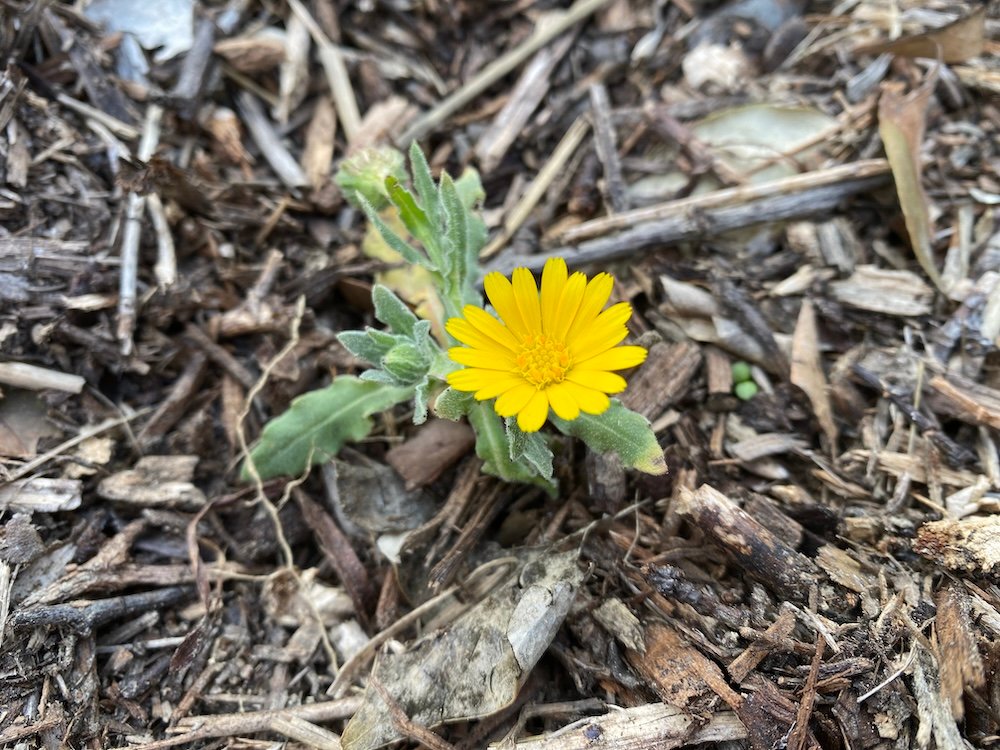I don’t really like “hot” colors in flowers, like yellow, orange, or red. But there are some I can’t resist. Among them is Calendula officinalis or Marigold – one of my alltime favorites.
Marigold thrives in a Mediterranean Garden
When we first arrived here I tossed a package of calendula seeds in the vegetable garden and it was one of the few plants that really thrived the following year in that poor, dry and chalky soil. In late January the first bright orange flowers appeared and they kept growing and blooming until the middle of June – without any watering! Then it got too hot for them, they became stressed and started to develop powdery mildew.
Since then I keep on sowing them in the fall. As a perennial one could also divide and replant, but the plants don’t look all that healthy after our hot summers so I prefer to take them out and sow new ones. They also reseed themselves quite easily if the faded flowers are left on the plant.
Calendula is not really a “classical” Mediterranean plant, although it does seem to have originated in Southern Europe. But it is one of the easiest, fastest-growing, and robust flowers to grow down here.
Marigold also has many uses
Marigold flowers or their petals are edible. I add the fresh petals to salads or the dried petals to herbal tea blends for color. They could also be used to add color to rice or other dishes – similar to saffron. The flowers are also used to make soothing tinctures, oil or cream for external use in the case of inflammations, shallow wounds, bruises, boils, or rashes.
The leaves are also edible but not really tasty. They can be made into a poultice to help heal scratches or shallow cuts and prevent infection.
Pharmacological studies show that calendula extracts may have anti-viral, anti-bacterial, anti-fungal and anti-inflammatory properties.
In Germany marigold was used to forecast the days weather: if the flowers were already open between 6 and 7 a.m., a beautiful, sunny day would follow. If they were still closed after 7 a.m., it would be a rainy day. I haven’t tried that one yet.
Grown as a companion plant in the vegetable garden Calendula attracts pollinators and helps keep aphids away from other plants.
Calendula arvensis
One pointer to the origin of Calendula officinalis may be Calendula arvensis, the tiny little Field Marigold, that shows all over the countryside in spring. It’s a Mediterranean native, found in many regions of the world, and grows all over the countryside in vineyards, fields, and meadows, flowering in spring.



Leave a Reply